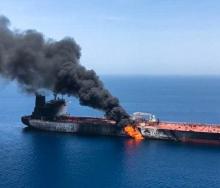Oil prices have reached five-month highs, primarily due to this weekend's escalation in the Middle East involving US strikes on Iranian nuclear sites.
On Monday, Brent crude futures surged to as high as $81 per barrel, and West Texas Intermediate (WTI) crude peaked at $78.40 per barrel, both marking their highest levels since January before retracting some gains later in the session.
The immediate trigger for this price spike was the Trump Administration’s decision to join Israel in attacking key Iranian nuclear facilities over the weekend, which has significantly heightened concerns about potential disruptions to global oil supply.
Iran, the third-largest oil producer of the Organization of the Petroleum Exporting Countries, has vowed to retaliate, and its parliament has approved a resolution to potentially close the Strait of Hormuz—a critical chokepoint through which at least 20% of the world’s crude oil passes.
The lion’s share of that oil goes to China, which receives at least 80% of its oil from sources in the Persian Gulf.
While Iran has threatened to close the strait in the past, but never acted on it, the current escalation has made the risk more acute and is fuelling market anxiety.
Market analysts and major banks, including Goldman Sachs, warn that any actual disruption in the Strait of Hormuz could send oil prices much higher, possibly above $120 or even $150 per barrel in extreme scenarios.
For now, the surge reflects immediate fears of supply disruption and the uncertain outlook for further escalation in the region.
In summary, recent events in the Middle East have directly caused oil prices to jump to five-month highs, with the market closely monitoring any further developments that could impact global supply.













